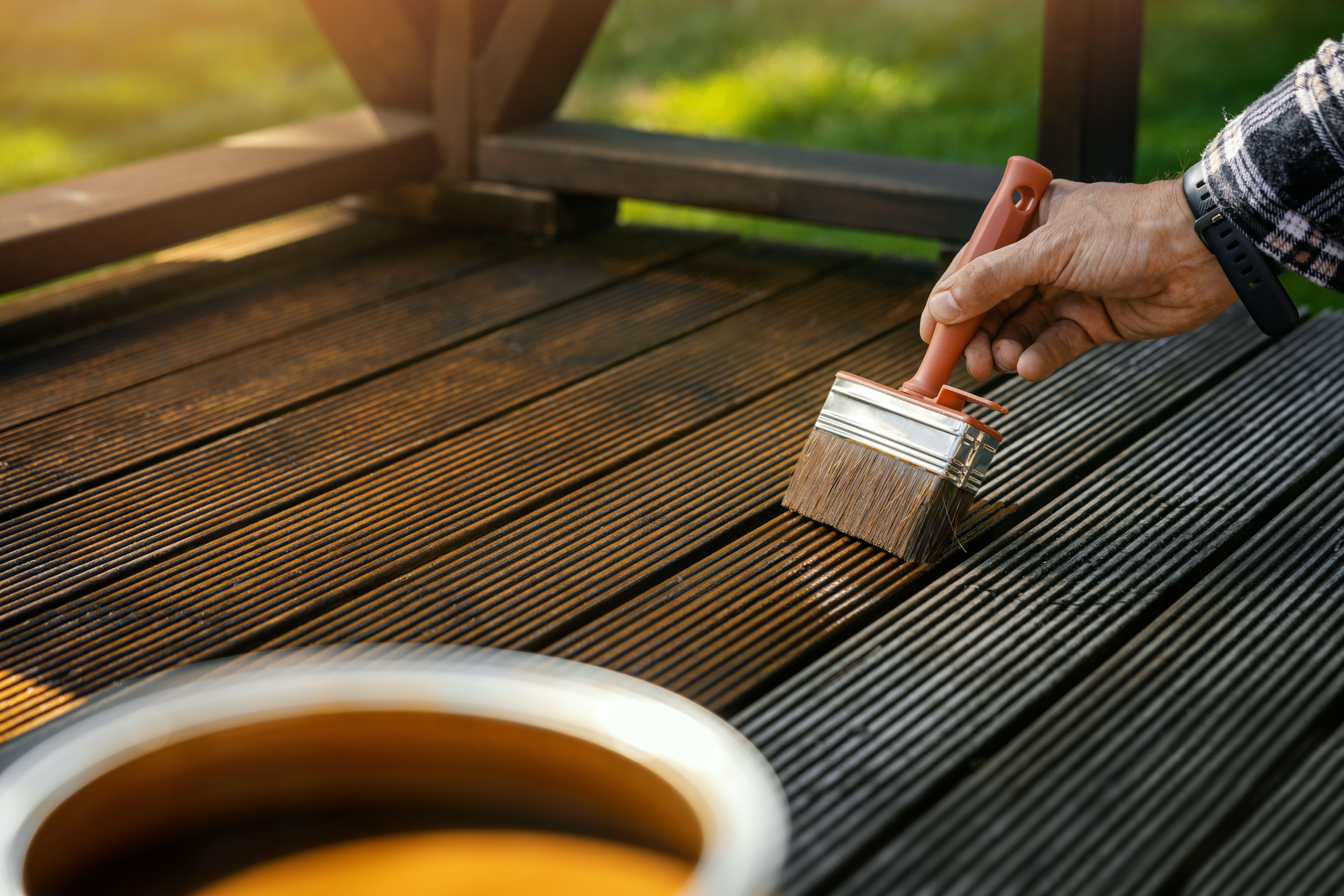How to stain a deck – 3 easy steps to a fresh new look
Give your outdoor area a refresh with our guide on how to stain a deck to help you achieve professional results every time


Staining a deck is an annual job, should you decide on this form of protection for the timber. A garden deck is a valuable addition to your outdoor area, providing extra seating, entertaining and relaxation space. Maintaining your deck, however, can be a laborious task, as the wood requires cleaning, sanding and restaining frequently.
If you are looking at building a deck, it's worth knowing that it should be stained right away, whilst existing decks should be treated every year or two, and certainly at the earliest signs of wear and tear.
Knowing how to stain a deck properly will not only prolong its life, but it will help make outdoor entertaining a relaxing and stress-free way to enjoy the summer months. Below, we have expert tips and tricks on the best way to complete the task.
How to stain a deck
Staining a deck is just one option for protecting or coloring your deck ideas, and we explain below how to do so in easy steps. Before you can stain it, you will need to clean a deck; and if it is badly damaged, you may need to look at sanding a deck. If your deck's surface is beyond repair or you like a more solid look, you will need to know how to paint a deck.
1. Prepare the deck for staining
Before you start it’s important to clean your decking thoroughly.
‘Unless your decking is brand new, you'll need to brush off any algae, moss and dirt with a stiff brush.’ advises garden designer, Tamsin Kelly. ‘You can use an old cutlery knife or putty knife to remove debris wedged between the boards,’ she confirms.
You can then use a specialist deck cleaner, and follow the manufacturer's instructions. ‘Some need to be wetted beforehand; some are rinsed off afterwards’, Tamsin explains.
Finally, go over lightly with a pressure washer or hose and leave to dry for the recommended time.
Decking that's been previously stained, painted or varnished should be stripped back to bare wood and lightly sanded.
2. Choose a wood stain
Caroline Thornborough, co-founder of Thorndown Paints advises that ‘a wood stain sinks into the timber more effectively than paint, and also creates a protective coating on the top’ so it’s important to choose a good quality stain.
‘Drying times vary for wood stain products depending on their quality, and oil products tend to have a much longer drying time,' Caroline confirms. Sherwin-Williams’ range of SuperDeck deck stains are ideal for ‘staining a new deck or restoring an old one to help you achieve professional quality results’, a spokesperson for the company confirms.
Tamsin Kelly also suggests an alternative to traditional wood stain. 'If you want to simply enhance the natural wood color, then I'd recommend Osmo decking oil to nourish the wood and enhance its life span,’ she confirms.
3. Apply the wood stain
Ensure your wood stain is evenly mixed by giving it a stir – this will help provide an even coverage.
Start applying your stain at the highest part of the deck, such as the handrail. This is to avoid drips from falling onto finished areas. Then, stain the vertical areas such as balustrades, and finally do the boards.
‘If you have a large expanse of decking, I'd use a paint pad or roller to speed up your transformation and allow you to paint three or four boards at a time,’ advises garden designer Tamsin Kelly.
Caroline Thornborough from Thorndown Paints suggests applying two coats of deck stain to ‘help it last longer’.
How often should I stain my deck?
In order to keep your decking looking smart and well-maintained, it’s best to stain every two years. However the frequency will depend on the weather, the type of wood your deck is made from and the type of stain you’ve applied.
Sign up to the Homes & Gardens newsletter
Design expertise in your inbox – from inspiring decorating ideas and beautiful celebrity homes to practical gardening advice and shopping round-ups.

Steph Hendries is a freelance journalist who has contributed to many different interiors websites including Homes & Gardens, Ideal Home and Livingetc. She has also worked on a range of social content for property brands such as Zoopla and Boomin. Steph writes for Homes & Gardens Solved section, concentrating on DIY, how to, cleaning and organizing content.
-
 6 items you should always unplug before leaving the house – banish 'phantom power' usage
6 items you should always unplug before leaving the house – banish 'phantom power' usageDon't let these mistakes cost you a small fortune
By Sophie Warren-Smith Published
-
 How to fertilize magnolias – garden experts reveal the secrets to better blooming, and timing is critical
How to fertilize magnolias – garden experts reveal the secrets to better blooming, and timing is criticalMagnolias are famed for their spring flowers, and feeding at the right time can give trees a boost
By Thomas Rutter Published